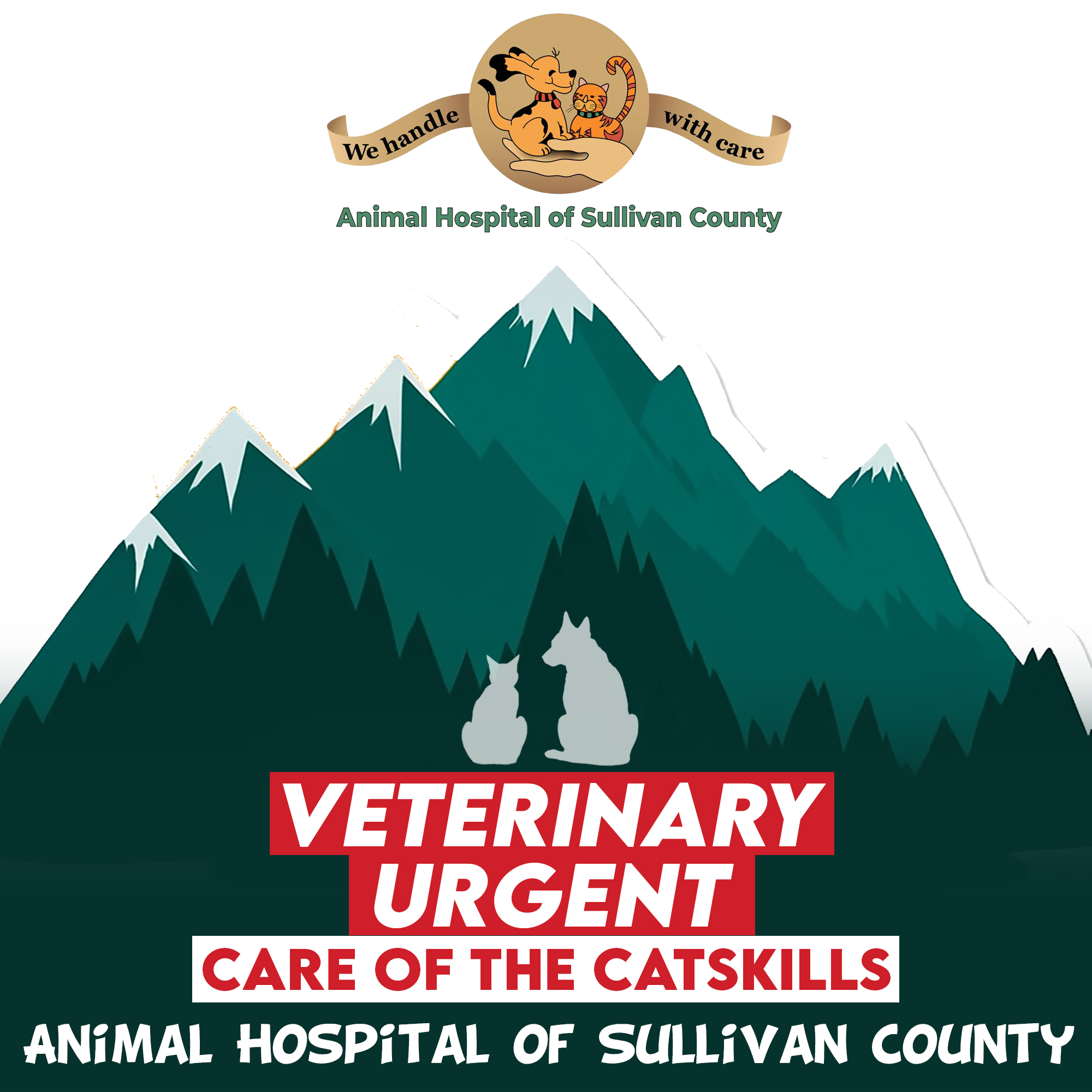
Who you going to call!
There is really only one rule when it comes to your pet’s health if you perceive that he or she might be getting sick: When in doubt, call your veterinary professional.
I can haul out any number of platitudes that all boil down to, “It’s better to be safe than sorry.” And as corny as that might sound, it’s still very true.
Worried about bothering us? I can tell you that if you’re a client with us here at the Animal Hospital of Sullivan County, a call from you about your pet’s health will be far from a bother (our number is (845) 292-6711). We’ll bend over backwards to get you in to see us that day, and your furry friend will meet directly with me. We’re committed to making sure our animal companion clients are well cared for, especially when the unexpected occurs. (And if something occurs outside of our business hours, don’t hesitate to call an emergency veterinary clinic. The one closest to us is Guardian Veterinary Emergency in Middletown, NY:(845) 692-0260).
With this in mind, what are some signs to look for which might indicate that your fur buddy is in medical distress?
Well, of course, there are the obvious things…burns, or uncontrollable bleeding, constant vomiting and/or diarrhea, broken bones, or the obvious ingestion of something poisonous. All of these situations cry out for contact with your veterinary professional. An unconscious pet—or a pet suffering from a seizure—would also be proof-positive that a call needs to be made.
Other symptoms may not be as obvious, but can also be indicators that something might be seriously wrong with your pet. These include trouble with breathing, choking, and/or hacking coughs. If that’s happening, make that call. A swollen abdomen is also a danger sign. Watch out for staggering or loss of balance…or the inability to move around at all. And if your pet’s eyes suddenly swell—or she seems to lose her eyesight altogether—you know you have to pick up the phone.
Okay, you’ve wisely made the call and have been advised to bring your pet in. At this point, it might be good to know a few basics regarding first aid, since you may have to administer care to stabilize your animal friend before getting her to the clinic.
One of the best first aid tactics to keep in mind is to try to stay calm and focused. I know—that might not be easy. But animals are intuitive, and if they pick up on your panic, they’ll panic right along with you. We want to avoid that.
Okay, ready? Let’s take a deep breath and help stop the bleeding.
You’ll want to muzzle your animal companion before starting. Even gentle, beloved Milo might snap when he’s hurting. You’re going to put clean gauze on the injury, and apply pressure until clotting begins (this may take a few minutes, but stay with it). You may also need to apply a tourniquet of gauze with a rubber band and secure it if the bleeding is really bad. Milo should now be ready for the trip to the emergency veterinary clinic.
What if your doggie is having a seizure?
We’ll, you’re not going to want to restrain him. Instead, get any objects that are close to him—which might cause injury—and put them out of the way. When the seizure passes, keep him warm and make that call to us. If Milo has had a number of seizures in a row—or one that lasts for more than three minutes—he’s going to need urgent care.
What if your furry friend breaks a bone?
This process is good for both dogs and cats. You’ll want to muzzle the poor fur-ball, then set her down on a flat surface, which will be used like a stretcher to get her to us. If it’s possible, we suggest gently securing her to the stretcher, but avoid putting pressure on the break.
What if your pet is choking?
Once again, Crisco may bite because he’s panicked, so use common sense while trying to help. Carefully check for objects in his mouth. If you see something, try to get it out of there if possible…but gently. (Have I mentioned being careful? The last thing you need is to accidentally push the object deeper into his throat.)
If the object is simply not coming out, it’s time to immediately get Crisco to our office or the nearest emergency veterinary clinic for urgent care. (It might be helpful to know how to perform the Heimlich maneuver on Crisco, since it could help to save his life. Tutorials are available online if you’d like to check it out before a crisis hits.)
Regular readers here know that I always recommend being prepared ahead of time anyway, since no one ever knows when an emergency might go down. Hey, being prepared for a veterinary emergency can help you to get your fur buddy the care she needs…and more quickly. With that in mind, we recommend the following:
- Keep our number handy: (845) 292-6711
- Have the number for the closest Emergency Veterinary Clinic handy as well: Guardian Veterinary Emergency in Middletown, NY—(845) 692-0260
- Know the ASPCA’s 24/7 Poison Control Hotline (there’s a fee, but it’s worth it): 888-426-4435
- Keep on hand a muzzle that fits Milo…and practice using it before an actual emergency strikes.
- Got directions to the Emergency Vet Clinic? Maybe save them as a FAVORITE in your GPS.
- Have knowledge of basic pet CPR (you’ll find tutorials for that online as well).
- Have basic knowledge regarding how to stop bleeding (see above)
- Know how to perform the Heimlich maneuver (again, check online).
- Realize that emergency treatment can be expensive, so save the sticker shock by putting money aside in a fund just in case…or maybe look into insurance for your animal friend.
And again, put aside all thoughts about “bothering” us by making a call if you suspect your fur ball is sick. That’s why we’re here. We love our clients and want to help you give your pets the long, healthy life they deserve.
So, when in doubt…Make. The. Call.
Barbara J Bodolosky DVM
Animal Hospital of Sullivan County


